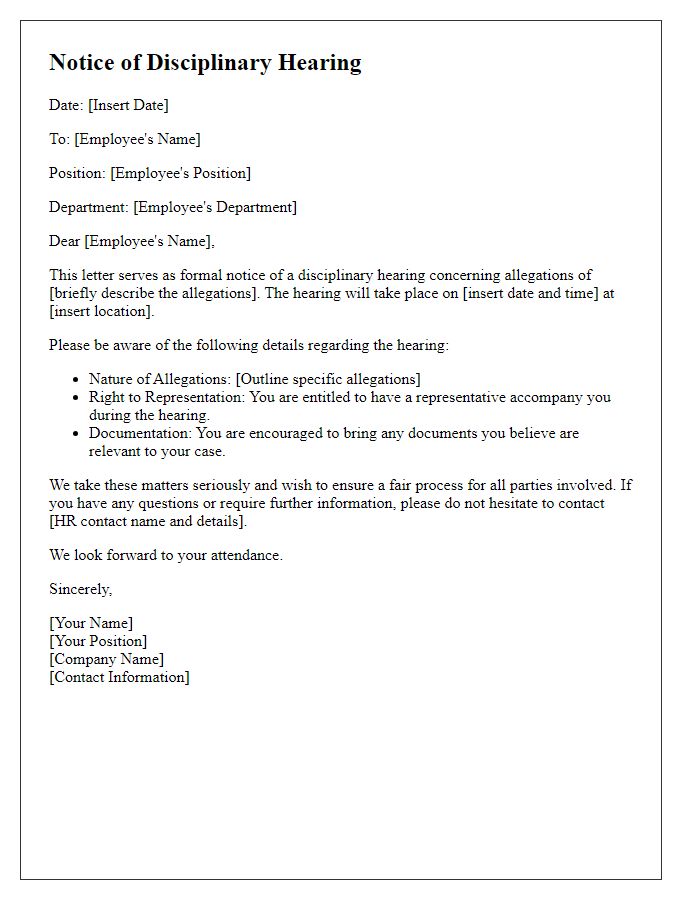Are you gearing up for a disciplinary hearing and feeling a bit overwhelmed? We know this can be a challenging experience, whether you're the one being disciplined or handling the proceedings. In this article, we'll break down a comprehensive letter template that can guide you through the notification process smoothly and professionally. So, if you're ready to navigate this important step with ease, read on to discover essential tips and examples!

Recipient's Full Name and Address
A disciplinary hearing notification serves as an important document to inform the recipient about a formal meeting regarding potential violations of company policies or conduct. The recipient's full name and address are crucial for ensuring the notice is directed correctly, reflecting professionalism in communication. Details such as the date, time, and location of the hearing are essential for proper attendance, while a brief overview of the allegations or incidents in question provides context. This notification may also outline the recipient's rights during the process, including the right to representation or the opportunity to present their case, highlighting the importance of fairness and transparency in workplace disciplinary procedures.
Date and Time of Hearing
The disciplinary hearing notification specifies the date and time of the hearing, which is critical for all parties involved. This essential communication outlines the scheduled hearing set for September 25, 2023, at 10:00 AM, located in the Main Conference Room (Room 205) of the Corporate Office Building situated at 1234 Business Rd., Springfield, IL. Participants must prepare to discuss the allegations presented in the notice, ensuring all necessary documentation is available for review. Attendance is mandatory, underscoring the importance of adhering to established protocols in workplace conduct.
Reason for the Hearing
A disciplinary hearing notification outlines the specific reasons prompting the meeting, highlighting the gravity of the situation. Common reasons include attendance issues, such as repeated tardiness beyond company standards or unauthorized absences exceeding three days in the past month. Performance-related concerns may involve failure to meet established targets, reflected by a 25% decline in productivity over the last quarter. Violations of company policies, particularly harassment incidents leading to formal complaints filed, also necessitate a hearing. Each of these factors not only affects overall workplace harmony but can influence team morale and operational efficiency in the long term.
Rights and Representation Options
A disciplinary hearing notification communicates essential information regarding the meeting's specifics, outlining the employee's rights in relation to the process. Employees possess the right to be accompanied by a representative, which may include a trade union official or a colleague, to ensure support and guidance during the proceedings. The notification will detail the date, time, and location of the hearing, often set within the context of workplace regulations. Moreover, it emphasizes the significance of understanding the allegations presented, the evidence that will be reviewed, and the potential consequences of the hearing's outcome, fostering a transparent approach to organizational compliance and employee rights within the workplace environment.
Contact Information for Inquiries
A disciplinary hearing notification outlines the upcoming meeting's purpose, date, and location within the organization. It is essential to provide contact information for inquiries to ensure clarity and address any concerns. For instance, the HR department, often located at the main office, may serve as the point of contact. An email address, such as hr@companyname.com, and a phone number, like (123) 456-7890, can facilitate easy communication. Inquiries may pertain to the hearing process, relevant policies, or representation rights, and prompt responses ensure that all parties are adequately informed and prepared.













Comments